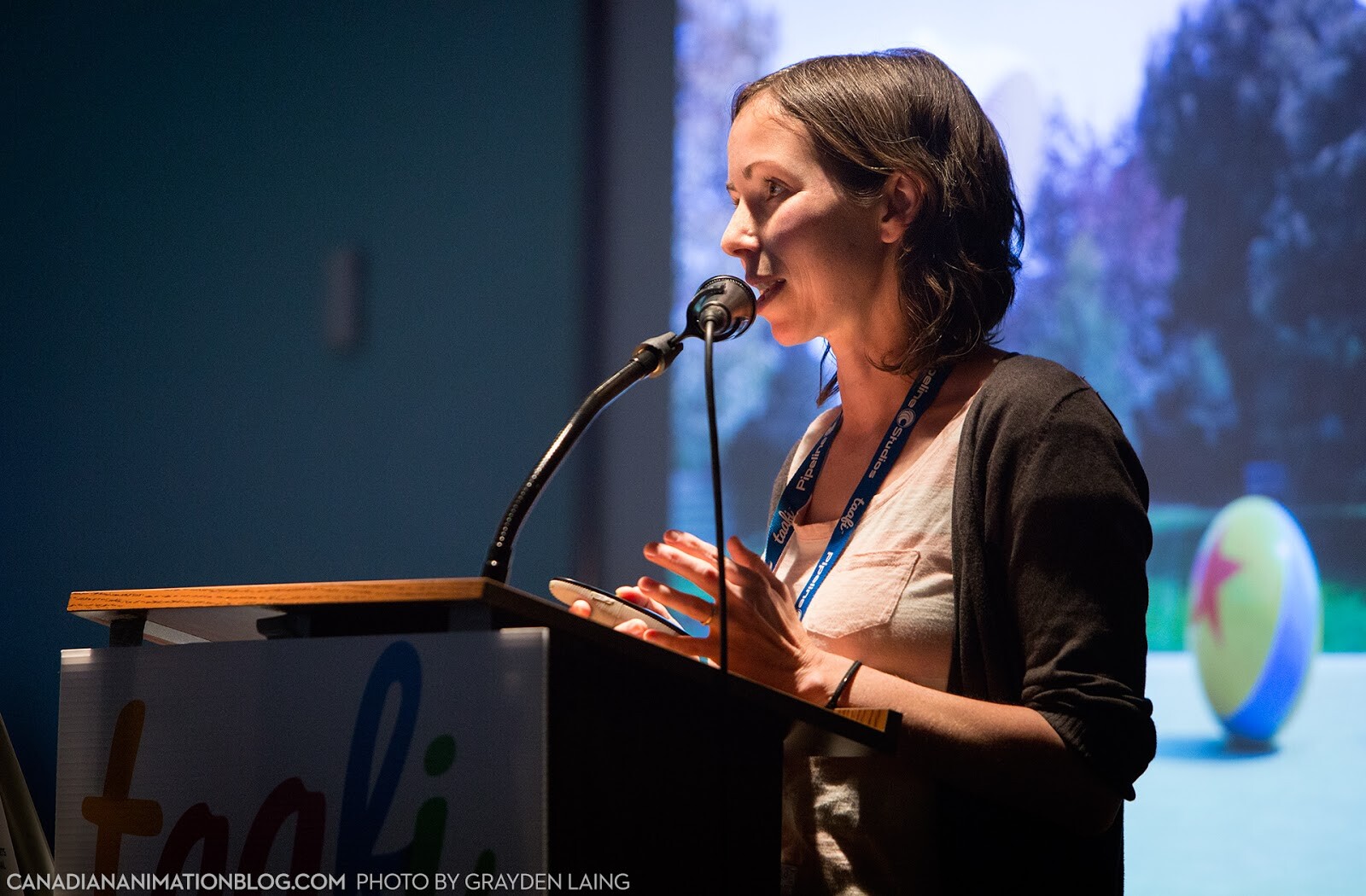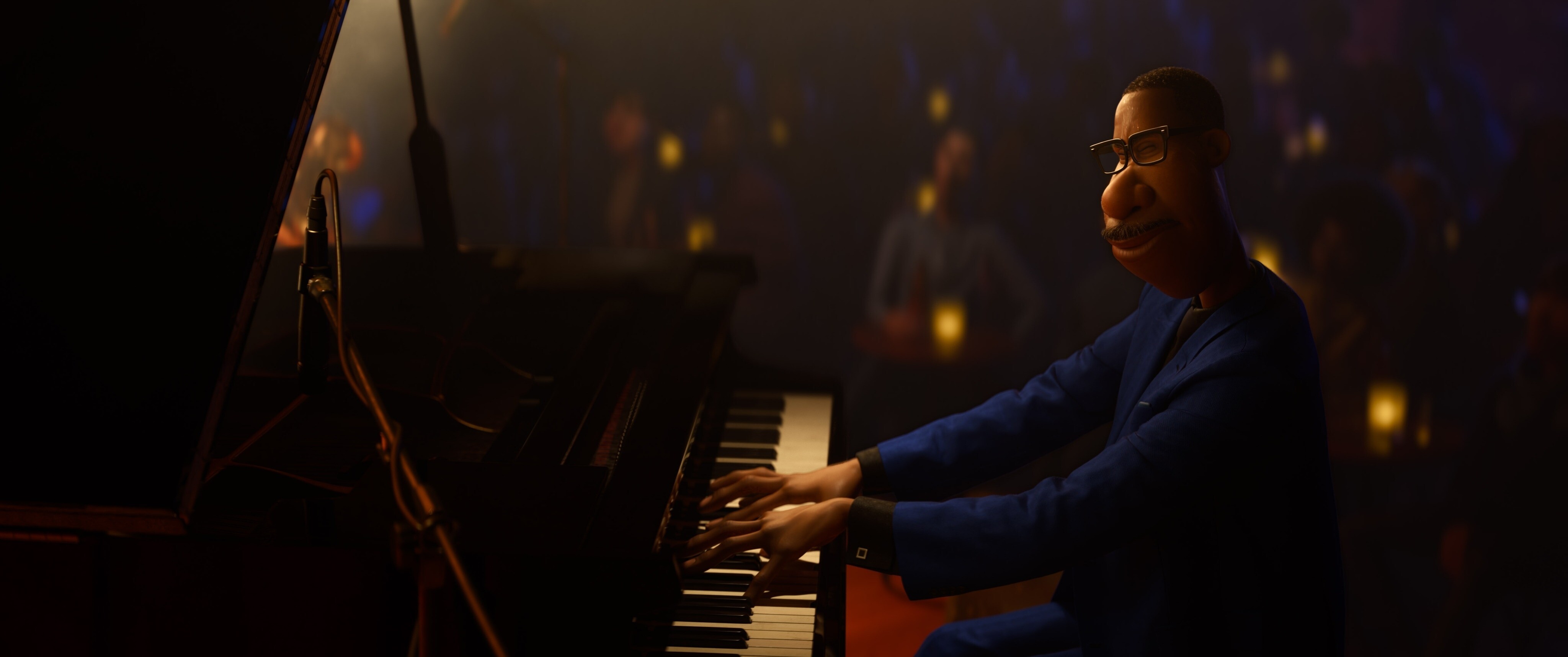An Interview with Annie Award-Winning Pixar Animator Allison Rutland
With over 15 years in the animation industry, Allison Rutland has a wealth of experience to share. Since reaching her personal goal of securing a position at Pixar Animation Studios in 2009, she’s contributed to many Academy-Award-winning movies such as Toy Story 3, Coco, and Inside Out. Her animation for leading character Riley from Inside Out landed her a prestigious Annie Award for Outstanding Achievement for Character Animation in a Feature Production in 2016.

Speaking with SyncSketch, Allison shares how approaching animation as a woman in a male-dominated arena “felt like a superpower” and gave her a unique lens for storytelling. In this interview, she focuses the lens on the power of subtleties in storytelling: from the way a character feels emotion in their body before their words arrive, to the importance of allowing space for a performance to breathe.
“Early on, being a woman in animation felt like a superpower. I had this unique perspective because I didn’t grow up obsessed with Star Wars, like most of my peers. I’ve always been really proud of my uniqueness. To me, it just meant I had something else to bring to the table.
Did you have any guidance in the industry, to help you hone this?
Allison: Yes. Holly Nichols, who worked in production at Guru Studio, took me under her wing and we became good friends and still are today. She helped me to forge a path into the Toronto industry and helped me to seek out work at other studios. I’ve also thrived with male colleagues and mentors, who have provided invaluable support. Morgan Ginsberg is an animator who helped me to cut my teeth in the industry and land me my first big break. At the time, I was still confused about how animation worked and he really helped me through that early stage. Thanks to his mentorship and network at Pixar, I ended up getting to work on my first feature film, Everyone’s Hero. Usually, it’s hard to make the jump from TV to feature without the initial experience. From working with TV animators, I was thrown into a feature, which springboarded me into other feature film opportunities. After that, I ended up getting the opportunity to move to London from Toronto, so those early mentorships were invaluable to kicking off my career on a global scale.
Mentorships clearly play a crucial role in forging a career in animation. Do they have leadership or mentor courses at Pixar that you can take?
Allison: Yeah and those have been really helpful.
“I think it’s really nice when I see other women lifting other women up and pushing them because I don’t think it happens enough, unfortunately.”
What kind of advice would you offer your mentee?
Allison: It’s a two-part thing. I don’t necessarily feel like I’m the best person for a particular type of acting shot or sequence, but when I do pick something up, I want it to be really good; I am kind of competitive. So if I am given a new or unique opportunity, I’m determined to do the best I can. Secondly, sometimes we have a propensity to shy away from projects we feel we’re not really good at. If I was advising a friend, I’d say ‘No, you should just go for it. You should definitely do that!’
But it’s really easy to dish out advice to other people, to take it yourself is somewhat harder. And it’s frustrating because I don’t see a lot of men dealing with that. I think it’s really nice when I see other women lifting other women up and pushing them because I don’t think it happens enough, unfortunately.
“I look forward to the day when women aren’t the minority in the nominations for awards such as The Annies, the Oscars… I have hope that with future generations, the industry will even out.”
You mention not feeling like you’re always the best person for an acting sequence. Would you say you can sometimes suffer from imposter syndrome?
Allison: When I first started my career, there weren’t as many female animators in the industry. It used to be more frustrating to talk about women in animation, – the fact is that it was a male arena, the majority of animators were male, just like other male-dominated industries, it felt like to get to the top you had to work extra hard.
I think at the start of my career, being in a male-dominated industry helped me hone my talent, but it also gave me imposter syndrome. Even later in 2016, when I was collecting my Annie Award, imposter syndrome reared its head. It felt amazing to be honored and I was super proud. I don’t think the fact that I am a woman is what helped me win the award for this particular piece of animation, I think I received it because I got the opportunity to work on key shots for a great movie that connected with people on a deeply emotional level. On top of that, I look forward to the day women aren’t the minority in the nominations for awards such as The Annies, the Oscars… I have hope that with future generations, the industry will even out.
“My mentor taught me that animation is about clarity, honesty, and simplicity”

What influence did your mentor have on your style of work?
Allison: My ability to connect through emotion, which won me the Annie Award, is a skill that Morgan helped me to nurture. He taught me animation techniques that I still use today. When I worked with him, I kept a little notebook and would write down things he said – inspiring things like ‘animation is about clarity, honesty, and simplicity’. These things really resonated with me because I remember animators in college telling me to exaggerate things and make it zany, but I don’t really like that – I don’t really like how that looks. I wanted characters to be real and interesting. Morgan had this sensibility that leaned more towards what I was interested in, which focused more on an honest performance.
You’re well known for your emotional scenes – how do you approach animating them, perhaps you even have a cheat sheet of do’s and don’ts?
Allison: I always approach any scene thinking about the subtext of the moment and how that can influence the performance. Subtle scenes have got all the same elements of a broader scene in terms of finding contrast or finding progression. Even the subtle squash and stretch… all those things… Without this attention to detail, subtle scenes can feel a little bit flat or like they don’t go anywhere.
You have to pick places to emphasize. So when I’m planning it, I have those things in mind as well as other information from the director. I usually spend a lot of time prepping at the beginning looking at references – either my own reference, if I can do it, or reference from actors in films that have similar nuances I’m looking for. I avoid things feeling too small. As well as thinking about the progression, I’m thinking about the rhythm through the sequence.
Often, for really emotional scenes, I can’t film them myself so I use actors and pick and choose specific elements. For example, focusing on eyes, I’d look at the types of blinks or patterns and use that as a starting place.
“Pay close attention to the eyes on the screen, because that’s really what the audience is going to connect to.”
You mentioned a lot of things you start to look at, but what are the things to avoid in a subtle acting scene? Do you have any top tips for burgeoning animators?
Allison: Avoid trying to fit too much in; allow the space for the performance to breathe a little bit – think about pausing. The white space.
Pay close attention to the eyes on the screen, because that’s really what the audience is going to connect to – a lot of times, subtle scenes are basically just a giant head! Tracking the eyes in screen space is super important because if they start moving too much, you start to lose connection with them as an audience member. It’s hard to see them clearly if they’re moving around too much.
Avoid being too on the nose with the accent. An animator will tend to hit the accents exactly at the timing of the dialog. Sometimes that is appropriate. But it’s not totally necessary, sometimes it’s more exciting for the performance to disconnect those two a little bit and have things happening in the pausing between dialog.
Anticipate the audio with the mouth way ahead of it happening, just to get a sense of the character’s thinking. Even through the pauses in the dialog, the character is still thinking. Often, students have a character say something and then, during the pause, it’s like they almost stop. When the audio starts, they do something again. Try to think about how that performance connects, even through pauses.
“Anticipate the audio with the mouth way ahead of it happening, just to get a sense of the character’s thinking”
So, you should think about when you’re starting to get really upset, how you feel it in your body, even before you show your emotions visually on the outside?
Allison: Yes, before you say anything, the feeling is already there, before the words come out!
For emotional scenes, is it harder to animate children or adults, or is it a similar process?
Allison: I think it’s a similar process but I would say children are easier because I can make them cuter. Adults might have more complexity in their performance, but children might have more simplicity in terms of their emotion and how it’s presented.

Speaking of emotions and working on deeply emotional scenes. What do you do to step away from work and recharge? What influences inspire you in your work?
Allison: Nature and walks with my family are always good for recharging, and I draw inspiration from looking at other people’s work- animation, acting, art. I find myself asking ‘Oh, how did they do that? What can I borrow from this? What can I learn and tweak for my work?’ I get excited seeing interesting acting performances that I never would have thought of and figuring out how they approached it, then incorporating those nuances into my work when tackling my next creative challenge.
Thank you so much for taking the time to chat with us Allison, it’s been a pleasure. We can’t wait to see your next character performance in Pixar’s upcoming movie Turning Red, due for release on March 11, 2022.
